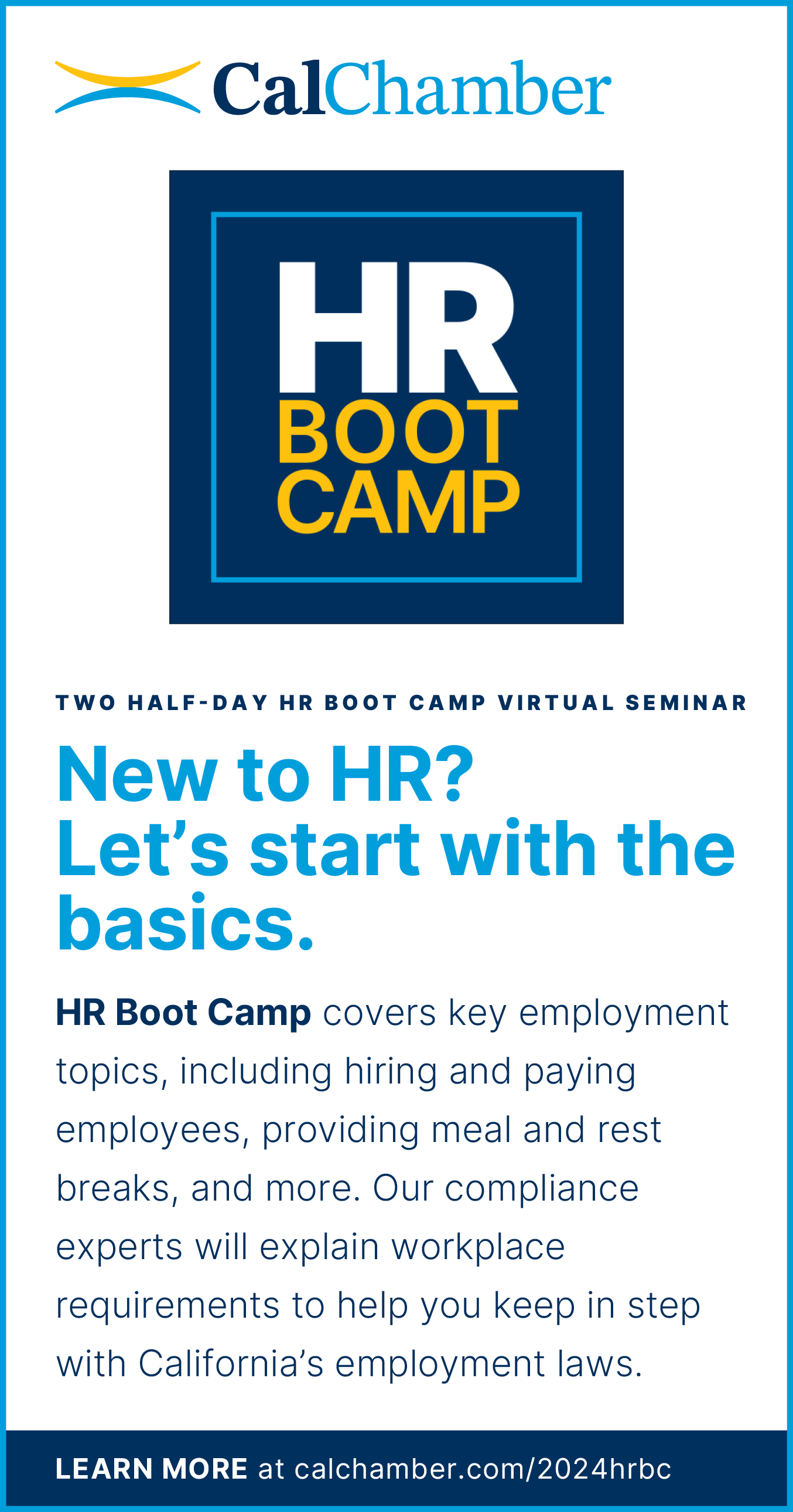
Employers in California are now required to protect their employees from potential harm created by wildfire smoke, following approval of an emergency regulation by the Office of Administrative Law on July 29. The rule is effective through January 28, 2020, with two possible 90-day extensions.
In Episode 22 of The Workplace, CalChamber Policy Advocate Robert Moutrie and CalChamber Executive Vice President and General Counsel Erika Frank review the steps employers should take to comply with Cal/OSHA’s wildfire smoke protection emergency rule.
Emergency Rule
Adopted by the Cal/OSHA Standards Board on July 18, the emergency rule requires employers to monitor the Air Quality Index (AQI) in the workplace and take steps to protect workers when the AQI reaches certain levels.
“Broadly speaking what employers need to begin doing is, let’s say you hear about a fire, you smell smoke, you need to be monitoring the AQI in your area, which you can do via government websites or an email alert,” Moutrie tells Frank. “If [the AQI] reaches certain levels, you’re going to need to take certain steps with your employees.”
To Do List
• First, Moutrie says, employers should decide whether the smoke protection requirements apply to them. Is the job site in an office building or an outdoor location or agricultural site?
“Rule of thumb: if you have an employee who is outdoors for more than an hour…in their shift, then that employee is going to fall under this [requirement],” he says.
• Second, employers should monitor if the airborne particulate matter (PM) 2.5 in the AQI is 151 or greater by visiting government websites, such as the California Air Resources Board (CARB).
Be cautious, however, of using third-party sources, such as The Weather Channel, Moutrie warns. Generally, these sources will give a general AQI reading, but not detail the PM 2.5—which is what employers need, and is what government websites provide.
• Third and last, employers should take compliance steps when PM 2.5 levels go over 150. There are two thresholds employers need to know: PM 2.5 levels over 150, and PM 2.5 levels over 500. Each threshold triggers its own set of requirements.
If the PM 2.5 level rises above 150, employers should provide N95 masks to all employees for voluntary use.
If the PM 2.5 level reaches 500, employees need to be fit tested and medically evaluated, and are required to wear the N95 mask.
“Thankfully, 500 is very uncommon unless you are just next to a wildfire,” Moutrie tells Frank.
Recommendations
• Set up an email alert via a state or local air quality monitoring site, such as: the U.S. Environmental Protection Agency’s Air Now or the South Coast Air Quality Management District’s Current Air Quality Data.
• Stock up now: Moutrie recommends that employers should stock enough N95 respirators to cover more than one shift. Also, employers should start stocking up now. Should a wildfire arise, supply could become an issue, Moutrie says.
• Set up an internal policy and train supervisors on how to monitor the AQI, and what to do if the PM 2.5 levels trigger compliance requirements.
More Information
More information and links are available in the CalChamber Top Story.
Subscribe to The Workplace
Subscribe to The Workplace on iTunes, Google Play, Stitcher, PodBean and Tune In. To listen or subscribe, visit www.calchamber.com/theworkplace.



